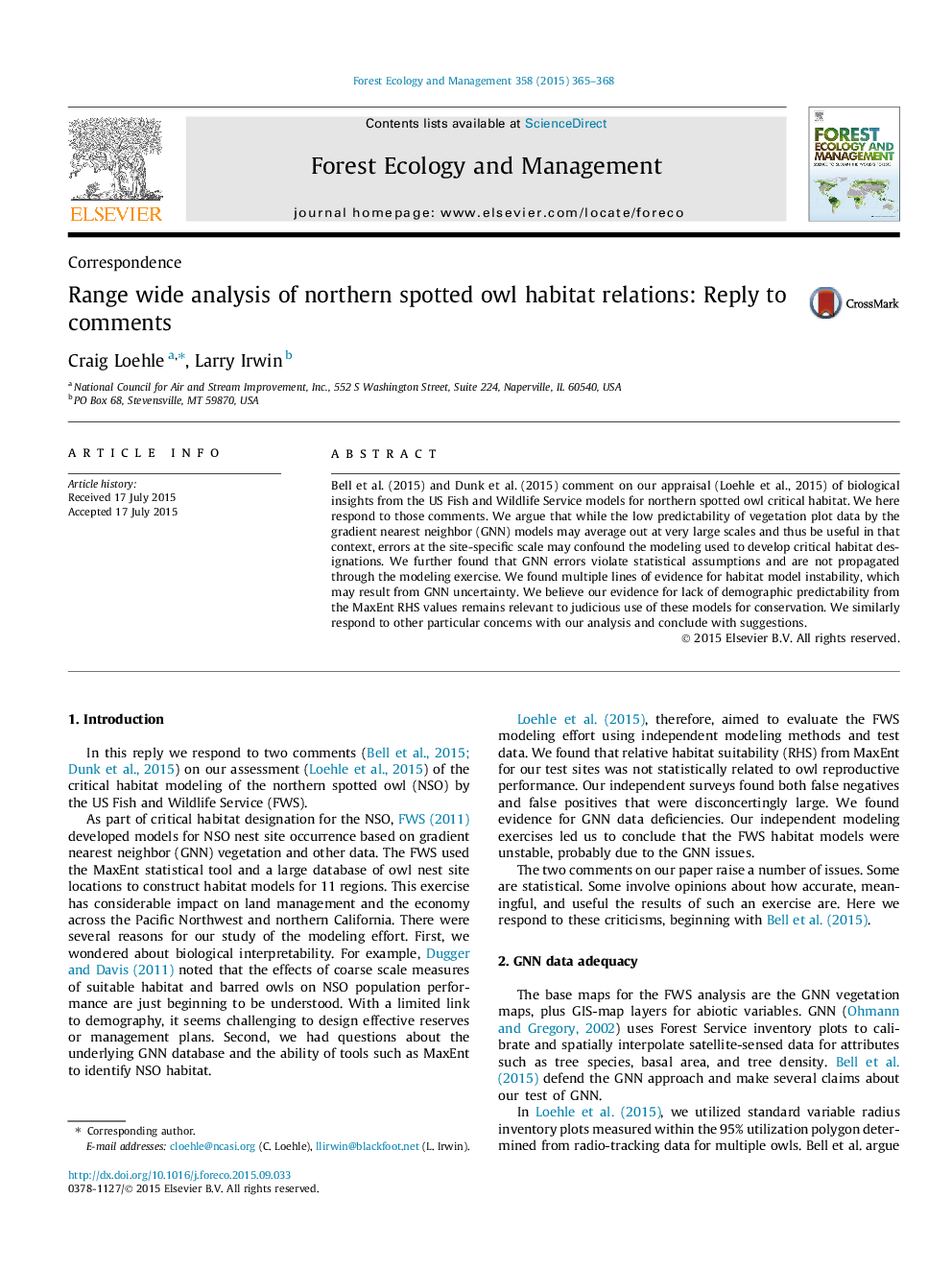| Article ID | Journal | Published Year | Pages | File Type |
|---|---|---|---|---|
| 86090 | Forest Ecology and Management | 2015 | 4 Pages |
Bell et al. (2015) and Dunk et al. (2015) comment on our appraisal (Loehle et al., 2015) of biological insights from the US Fish and Wildlife Service models for northern spotted owl critical habitat. We here respond to those comments. We argue that while the low predictability of vegetation plot data by the gradient nearest neighbor (GNN) models may average out at very large scales and thus be useful in that context, errors at the site-specific scale may confound the modeling used to develop critical habitat designations. We further found that GNN errors violate statistical assumptions and are not propagated through the modeling exercise. We found multiple lines of evidence for habitat model instability, which may result from GNN uncertainty. We believe our evidence for lack of demographic predictability from the MaxEnt RHS values remains relevant to judicious use of these models for conservation. We similarly respond to other particular concerns with our analysis and conclude with suggestions.
